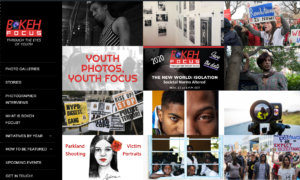In a good year, Martha de Acosta knows exactly how much money to expect from the federal government.
This is not a good year.
De Acosta, director of the Full-Service Community School Program of the Milton S. Eisenhower Foundation in Washington, D.C., is awaiting official word that her three congressional earmarks have been approved. But, like administrators at youth agencies around the country, de Acosta is facing financial uncertainty because of the political impasse in Washington.
The 107th Congress adjourned for good last month without completing the fiscal 2003 appropriations bills that contain the earmarks, even though the fiscal year began Oct. 1. So far agencies are getting by fine, but they go into the new year wondering if they’ll have to temporarily lay off workers or suspend programs.
“We won’t be able to reach out and treat as many kids as we’d like” because of the funding delay, said Robbie Callaway, senior vice president of the Boys & Girls Clubs of America, which is slated to receive $80 million in 2003.
At Eisenhower, de Acosta relies on the federal money to make subgrants to local collaborations that run the community service centers at six schools in five states. Until Congress acts, de Acosta cannot tell those collaborations how much money they can expect.
“They want some reassurance they can hire staff or plan a summer program,” said de Acosta, who works in the foundation’s Midwest office in Cleveland. “We can’t give them assurance.”
It’s an ironic dilemma, because getting an earmark is supposed to relieve nonprofits of some of their funding anxiety.
Earmarks reserve funds within an account for a specific purpose. Lawmakers jockey each year to secure these set-asides for pet projects or favored constituencies.
Although earmarks can appear in almost any type of legislation, the bulk are announced during the appropriations process in the fall. Only earmarks that are actually within legislation carry the force of law. Most earmarks, however, are within committee reports, which accompany legislation and are not binding (even though agencies obey the reports because they are unwilling to buck their appropriators in Congress).
Even if a committee report is finished, it’s meaningless if the legislation that it accompanies doesn’t pass. That was the case with 11 of the 13 appropriations bills in the second session of the 107th Congress. The continuing resolutions that have kept the government running past the end of the fiscal year do not include earmarks.
Problem for Everyone
Many nonprofit organizations, especially those with national ambitions, have focused more in recent years on lobbying for earmarks, relying less on discretionary competitive grants.
“It absolutely is a route that youth-serving agencies and others have pursued and are pursuing, and it’s a problem for everyone that relies on federal resources,” said Irv Katz, president of the D.C.-based National Assembly of Health and Human Service Organizations. With the budget delays, “there is inevitably going to be an interruption in services.”
Some organizations may be forced to lay off workers, albeit temporarily, if the earmarks come too late. That could cause more serious staffing problems down the road, Katz said. “If you lay off talented people, the people with the history and who know what they’re doing, they’re going to be hard to replace,” he said.
The weak economy, devastated stock portfolios and state budget woes compound the problem. “It’s not a good time. I’m hearing more about belt tightening and cost-cutting at the state and local levels,” Katz said.
For small organizations like Watch D.O.G.S. Across America in Springdale, Ark., an earmark is a blessing that can spur new growth or support broader missions. The organization, which encourages fathers to volunteer time at schools, started with one school in 1998 and now comprises between 180 and 200 programs in 21 states.
The organization received a $100,000 earmark from the Department of Justice last year and expects a $295,000 earmark for fiscal 2003. Although agency President Jim Moore says his organization will get by in the short term, he said, “We’d love to see [the money] come about in a timely fashion.”
In Huntsville, Ala., the National Children’s Advocacy Center, founded by U.S. Rep. Bud Cramer (R-Ala.), is moving forward with an $8.5 million construction project. The center, which provides services for abused children and their families, expects a $750,000 earmark from the Department of Housing and Urban Development. The center received a $1 million earmark in fiscal 2001 and $500,000 in fiscal 2002.
“The federal dollars are extremely important to us,” said Development Director Chris Russell. “It is not something that is devastating,” but not getting the money “would cause serious concerns in terms of timelines.”
The Boys & Girls Clubs of America annually snares one of the largest earmarks to a nongovernmental organization from the Department of Justice. The organization’s earmarks grew from $60 million in fiscal 2001 to $70 million in 2002.
Unlike smaller agencies, the Boy & Girls Clubs has a big cushion. “Fortunately,” Callaway said, “all the federal money we get we match with private money.”
The Eisenhower Foundation receives numerous earmarks through different appropriations bills. In fiscal 2002, de Acosta’s program received earmarks for $500,000, $450,000 and $100,000 from the Department of Education to start or run community centers at middle schools.
If the 108th Congress acts quickly after arriving in January, de Acosta could get her money by April or May.































